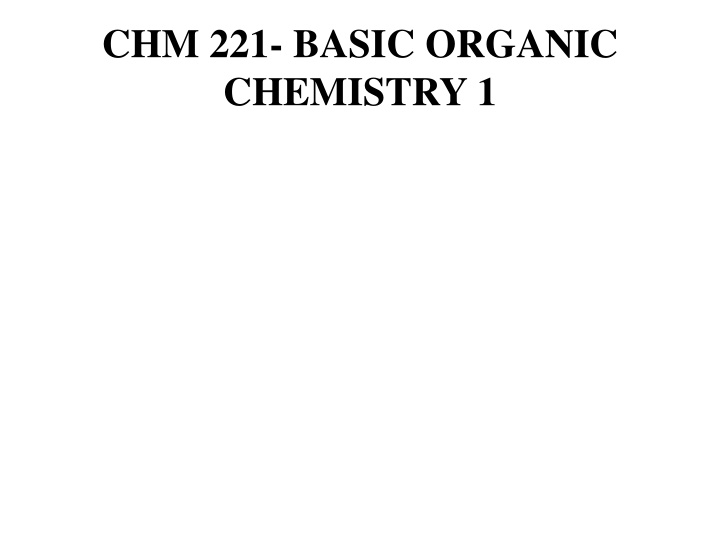
Allicyclic Hydrocarbons and Their Nomenclature
Explore the basics of allicyclic hydrocarbons in organic chemistry, including their general formulas, nomenclature rules, and structures. Learn about cycloalkanes and how to name cyclic compounds using numerical prefixes and functional group endings for a comprehensive understanding.
Download Presentation

Please find below an Image/Link to download the presentation.
The content on the website is provided AS IS for your information and personal use only. It may not be sold, licensed, or shared on other websites without obtaining consent from the author. If you encounter any issues during the download, it is possible that the publisher has removed the file from their server.
You are allowed to download the files provided on this website for personal or commercial use, subject to the condition that they are used lawfully. All files are the property of their respective owners.
The content on the website is provided AS IS for your information and personal use only. It may not be sold, licensed, or shared on other websites without obtaining consent from the author.
E N D
Presentation Transcript
CHM 221- BASIC ORGANIC CHEMISTRY 1
compounds have the general formula CnH2n (corresponding to 1 ring), CnH2n-2 (corresponding to 2 rings- bicyclo compounds) and CnH2n-4 (corresponding to 3 rings), etc. The smallest numbers of carbon atoms that can be arranged in a ring is three represented by the hydrocarbon; cyclopropane. Each additional rings lowers the number of Hydrogen atoms in the general formula by 2. Aliphatic cyclic hydrocarbons having one ring
NOMECLATURE AND STRUCTURE OF CYCLIC HYDROCARBONS
Allicyclic compounds are often shown by the topological formulations such as;
ring of the cyclic compound is counted and word cyclo is prefixed to the name of the alkane having the same number of carbon atoms on a straight line.
The general name of saturated cyclic hydrocarbons is cycloalkane. e.g.
indicated by numbering and either appropriate prefixes before the word cyclo or by appropriate ending indicating the functional group. e.g
When there are more one substituents, the numbering of the carbon atom that gives the lowest sum is chosen, e.g.
bonds and triple bonds respectively. The positions of the double-bonded and triple-bonded carbons in the carbon chain are given the numbers 1 and 2 and are not prefixed to the name of cycloalkene and cycloalkyne, e.g
two or more same carbon atoms are known as Policyclic compounds . Those with two rings are called bicyclic Compounds. The rings may be fused as in Decalin or bridged as in norborane.
NUMECLATURE OF BICYCLIC COMPOUNDS
two rings are referred to as bridge head carbons. The number of carbon atoms between the bridge head carbons in the molecule are specified by counting from the bridge head carbon and listing each of the numbers in brackets in decreasing order prior to the parent name of the hydrocarbon. Thus norborane is named as bicyclo [2,2,1] heptanes.
hydrocarbons are numbered from the bridgedhead carbon around the largest ring first. Substituents are counted from the number assigned to the C positions.
Draw the structure of the following alicyclic compounds:
2 2-chloro-4-carboxy bicycle[1,1,0]butane
STRAIN ENERGY OF ALICYCLIC HYDROCARBONS
indicatees that the energy content of cyclopropane is greater because of its acyclic arrangement. Similarly , cyclobutane has 6.5kcal/molper CH2 unit more than expected from a non- cyclic arrangement. The difference in the measured heat of combustion of acyclic hydrocarbon and the predicted value is called the STRAIN ENERGY .the strain energy per methylene group is obtained by dividing the molecular strain energy by the number of
cycloalkanes Strain energy per CH2 unit kCal/mol kCal/mol Strain energy
cyclopropane 9.1 27.3
Cyclopentane 1.2 6.0
cyclohexane 0.0 0.0
Cycloheptane 0.8 5.6
